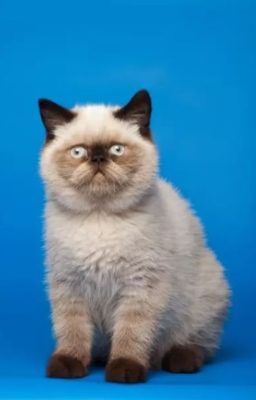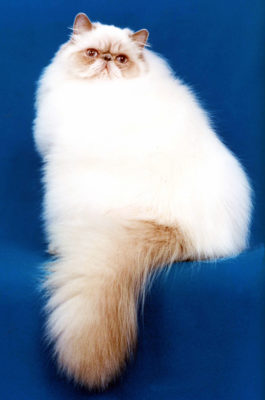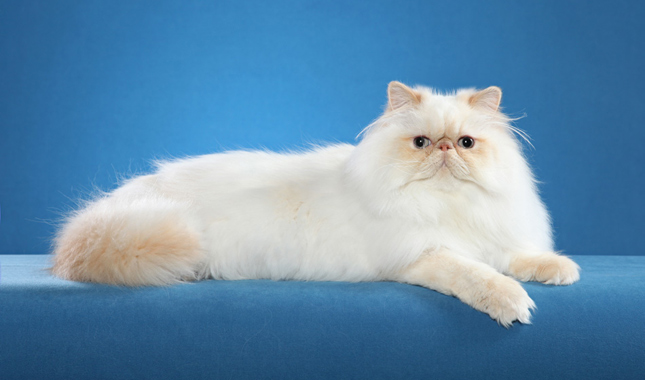Himalayan Cat
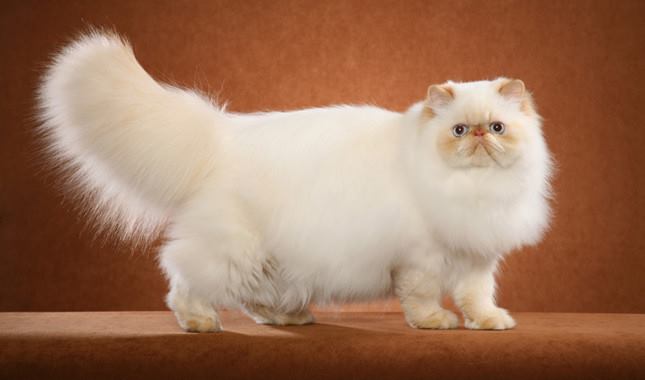
The wobbly character of Persians characterizes Himalayan cats. They are calm and balanced natures. They are patient and friendly to everyone around them. The Himalayans love a calm environment; they are unfamiliar with the negative aspects of Persians’ character. Cats treat children neutrally; they will not tolerate their antics. With dogs and other animals, the situation is the same.
Table of Contents
Breed Information
| Origin | United States |
| Size | 25-30 cm |
| Weight | Males 4-6 kg Females 3-5 kg |
| Fur Type | Long-haired |
| Color | Colorpoint and deep blue eyes |
| Lifestyle | Outdoors, indoors |
| Lifespan | 9-15 years |
| FIFe Classification | Category I: “Exotic and Persian” Breed designation – PER |
| WCF Classification | Group 1: “Long-haired” Breed designation – PER |
| TICA Classification | – |
| Group | Long-haired cats |
| Price | $200-2500 |
Breed Photos
Origin History
The first attempts to breed the breed were made in the 1930s in the United States. The name came from a color similar to that of Himalayan rabbits. For 20 years, American breeders Clyde Keeler and Virginia Cobb crossed Siamese and Persian cats. In the early 50s, they succeeded in creating an essentially new breed, the Himalayan cat. In 1955 it was recognized by the GCCF, and two years later – the CFA. The breed standard appeared only by the end of the 1980s.
Appearance
There are two types of Himalayans: classic Persian and Peking. Cats of the first type have doll-like faces with a short, not too upturned nose. More flattened faces characterize the second.
The body of the Himalayan cat is large. The back is perfectly straight and short. The skeleton is strong and heavy. Abdomen with rounded ribs. The pet’s neck is thick and short. It bears a large, wide, domed head. The cat’s jaws are broad and powerful. The miniature ears of the Himalayan are set low, and the distance between them is large. The eyes are large and round, blue. The nose is snub-nosed and short.
The limbs of the Himalayan cat are straight and short. The tail is short and straight, proportional. The pet’s fur is long and soft, with an undercoat. The following colors are allowed:
- blue point;
- mauve point;
- power point (dark brown markings);
- chocolate point;
- brown-red and cream point.
Character
The wobbly character of Persians characterizes Himalayan cats. They are calm and balanced natures. They are patient and friendly to everyone around them. The Himalayans love a calm environment; they are unfamiliar with the negative aspects of Persians’ character. Cats treat children neutrally; they will not tolerate their antics. With dogs and other animals, the situation is the same. This breed’s pet is devoted to the owner, trying to spend more time with him and be useful. At the same time, you can’t call him playful, but he is an unabashed homebody.
Care
Heat-loving Himalayas are used to comfortable home conditions. Keep the apartment at the right temperature. And also, keep the cat away from drafts and hypothermia to avoid respiratory diseases.
Long hair should be combed out daily with a special comb. The cat should not be bathed more often than once every couple of months. Teeth should be brushed three times a week. Don’t forget to trim the claws of your pet once every ten days. Take care of your cat’s eyes and ears, and remove discharges in good time.
Education
A Himalayan cat is intelligent and docile. But in spite of this, it is not so easy to raise it. It is worth starting at an early age. After all, if the pet acquires bad manners, correcting it in adulthood will be impossible. Therefore, the first tasks are socialization and habituation to the litter box. Also, the pet needs to get a scratching post to wean it from scratching the furniture.
Teaching the cat commands and tricks will be very difficult. Have patience and delicacies if you set yourself such a task. First, you need to show the cat a treat, which it will get to correctly. Be lenient with your cat, don’t yell at him, and don’t push him morally. If the cat is not interested in the exercise, it is better not to touch it. The training should not be long and tedious so that he does not lose interest completely.
Common Diseases
There are no obvious problems with the cat’s immunity. However, some genetic diseases are inherent in the Himalayan. Diseases to which the tendency is manifested:
- difficult breathing;
- bad dental bite;
- eye diseases;
- hyperesthesia syndrome;
- thermal sensitivity;
- polycystic kidney disease;
- oil seborrhea;
- predisposition to ringworm.
The shape of the muzzle causes breathing problems. Eye diseases include retinal atrophy, Entropia, and cherry eye. The cat is also prone to fungal infections affecting the skin.
Nutrition
Because of the tendency to obesity, it is important to monitor a Himalayan cat’s diet closely. Kittens should be fed four to five times a day, adults enough two times. The best for this purpose will be dry premium food. They contain all the necessary vitamins and minerals and prevent tartar. Feeding natural food is also possible, but then it is better not to mix it with food.
The basis of the diet should be lean meat. Beef and chicken are ideal. Sometimes give your cat boneless saltwater fish as well as vegetables and cereals. Milk and dairy products are not superfluous. Cottage cheese, kefir, sour milk, and fat-free sour cream will perfectly supplement the cat’s diet. Do not forget about fruit, because it is delicious and healthy. Remember that Himalayan cats like apples and grapes.
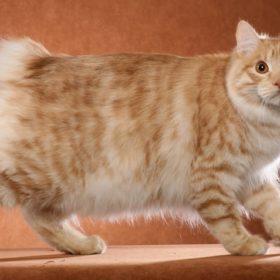 Kurilian Bobtail Longhair
Kurilian Bobtail Longhair Birman
Birman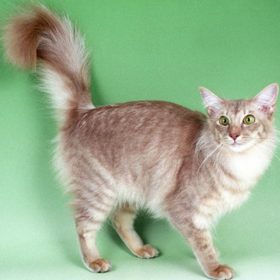 Javanese
Javanese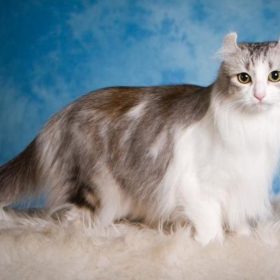 American Curl Longhair
American Curl Longhair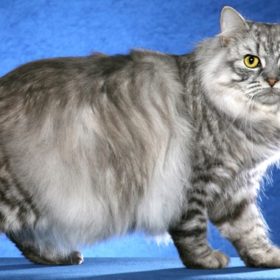 Cymric
Cymric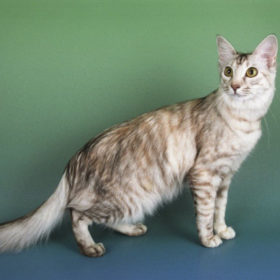 Oriental Longhair
Oriental Longhair